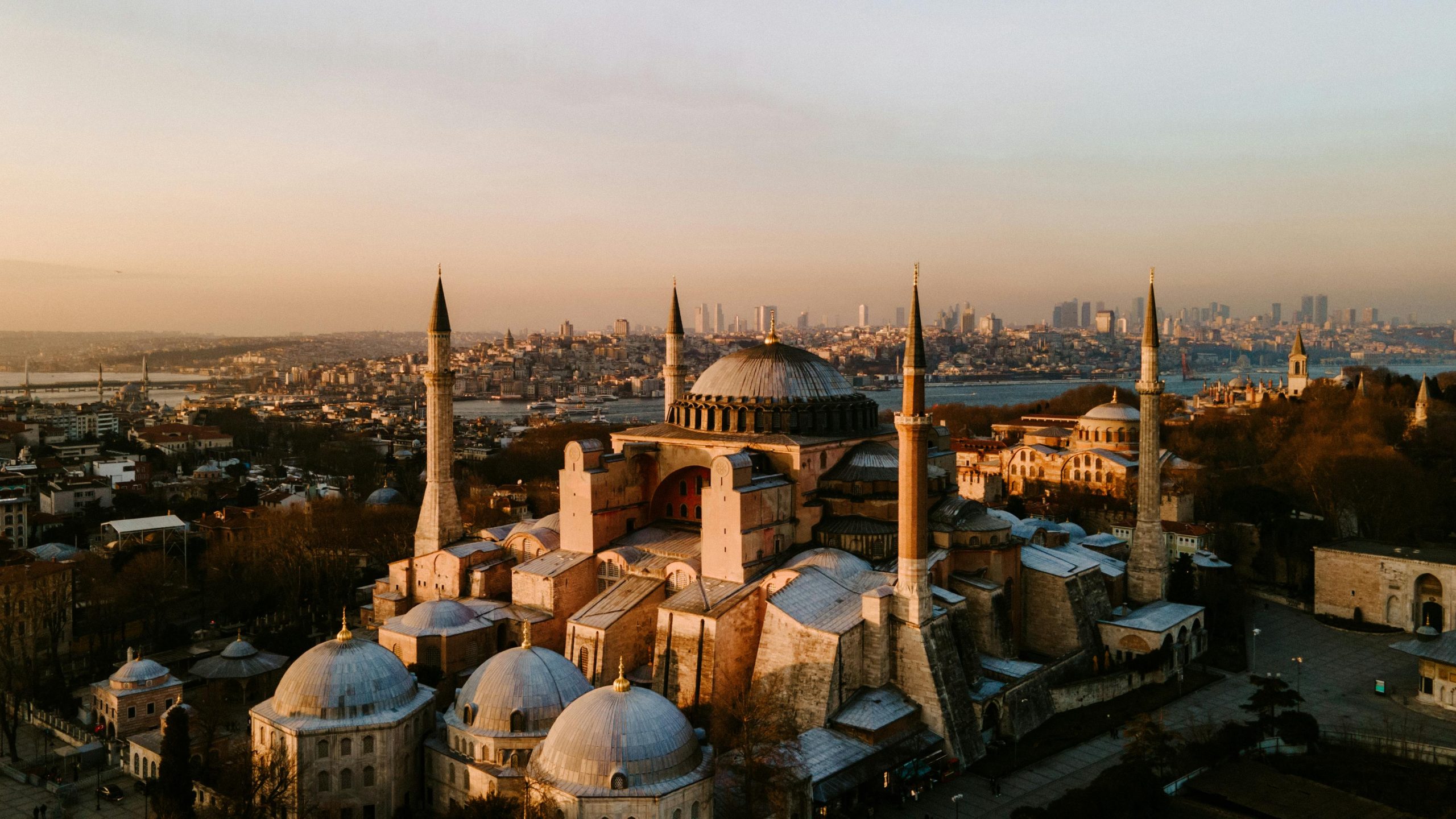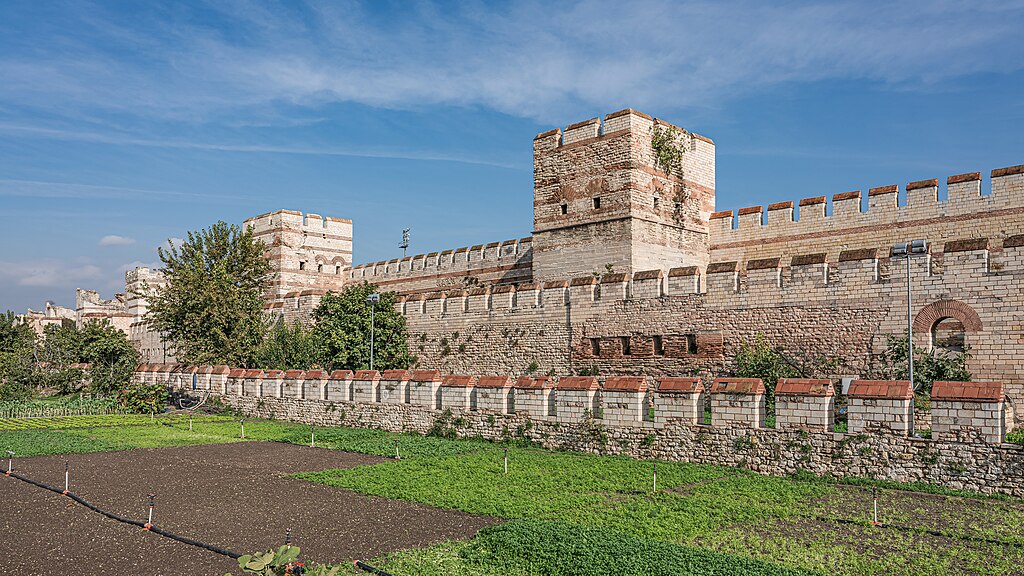Boukoleon Palace, Istanbul
Palace in Istanbul

Lying quietly along the shore of the Marmara Sea, Boukoleon Palace (or Bucoleon) is one of Istanbul's most intriguing hidden relics. Once the grand seaside residence of Byzantine emperors, it was originally built in the 5th century by Emperor Theodosius II and later expanded by Emperor Theophilos in the 9th century. The name “Boukoleon” — meaning “bull and lion” — comes from a statue group that once stood proudly in front of the small harbor below the palace walls. Although time and tides have reduced it to ruins, the site remains one of the must-see places in Istanbul for those fascinated by the city's early imperial history.
Today, Boukoleon Palace offers a glimpse into a forgotten era when Constantinople's elite lived overlooking the Marmara waves. With fragments of arches, marble facades, and carved windows still visible, the site is a great place to visit on a walking tour of Istanbul, especially for travelers exploring the remnants of Byzantium beyond the usual attractions.
History and Significance of Boukoleon Palace
Originally known as the Palace of Hormisdas, the complex began as a residence of Emperor Theodosius II in the 5th century. Its transformation into one of Byzantium's grandest palaces came under Emperor Theophilos (829–842), who expanded it with new pavilions and a striking 300-meter-long façade facing the sea. The Boukoleon became the principal imperial residence until the 11th century, when the Komnenos dynasty shifted the court to the Palace of Blachernae in the northwest of the city.
During the infamous Fourth Crusade in 1204, the palace was stormed by Western knights led by Boniface of Montferrat. Chronicles describe the plunder of unimaginable treasures — “beyond end or counting” — and the capture of the Hungarian princess Margaret, whom Boniface later married. Though the empire eventually recovered, the palace's glory never returned. Over time, it fell into disuse and decay, its stones slowly merging with the city's old sea walls.
Things to See and Do in Boukoleon Palace
While the Boukoleon Palace is not yet a fully restored monument, its surviving structures still impress those who venture to the site. Visitors can view the remains of the sea-facing walls, marble window frames, and arched chambers that once overlooked the Marmara. The palace's dramatic location beside the ancient harbor makes it a rewarding stop for history enthusiasts and photographers seeking atmospheric ruins away from the crowds.
Plans are underway to transform the Boukoleon into an open-air museum, complete with a timber walking path, visitor center, and reflective pool designed to evoke its maritime past. Until then, visitors can admire the palace from the roadside and seafront walkway along Kennedy Avenue. Even fenced off, the site exudes a quiet majesty — a reminder of Constantinople's early days as the seat of an empire that ruled both East and West.
How to Get There
Boukoleon Palace lies along Kennedy Avenue, between Sultanahmet and the Yenikapı area, overlooking the Marmara Sea. It's easily reached on foot from Sultanahmet Square — about a 10-minute walk downhill past the Arasta Bazaar and along the ancient sea walls. For those using public transport, the T1 tram stops at Sultanahmet, from where the site is accessible on foot. For visitors arriving by train, Sirkeci railway station is roughly 20 minutes away on foot. You can use the official TCDD Taşımacılık website to check schedules, compare routes, and purchase tickets for Turkey's national and regional trains operated by TCDD. For a more streamlined experience (especially if you prefer an English interface or want to compare across countries), we recommend using Omio, which allows you to easily compare prices, schedules, and book train tickets across Turkey and the rest of Europe — all in one place. Drivers can park near the coast road or in the paid parking areas close to the Small Hagia Sophia Mosque. If you are looking to rent a car in Turkey I recommend having a look at Discover Cars, first, as they compare prices and review multiple car rental agencies for you.
Practical Tips on Visiting Boukoleon Palace
- Best time to visit Boukoleon Palace: Morning or early evening for pleasant light and quieter surroundings.
- Entrance fee in Euros: Currently free; site can only be viewed from outside.
- Opening hours: Open viewable ruins; accessible at all times from the surrounding streets.
- Official website: None (future museum plans are under the Istanbul Metropolitan Municipality).
- How long to spend: Around 20–30 minutes.
- Accessibility: Uneven surfaces; not suitable for wheelchairs or strollers.
- Facilities: None on-site; cafés and restrooms available in nearby Sultanahmet.
- Photography tip: Capture the ruins from the coastal walkway with the Marmara Sea as a backdrop.
- Guided tours: Occasionally featured in Byzantine heritage walking tours.
- Nearby food options: Cafés and seafood restaurants along the nearby seafront.
Is Boukoleon Palace worth visiting?
Yes — particularly for lovers of Byzantine history or off-the-beaten-path exploration. While the site remains fenced and partially in ruins, Boukoleon Palace offers a fascinating look at Istanbul's earliest imperial architecture and the enduring legacy of Constantinople's maritime past. It's not grand in scale anymore, but it's rich in atmosphere — a place where imagination fills in the missing marble.
FAQs for Visiting Boukoleon Palace
Can you enter the Boukoleon Palace?
Currently, no — it remains fenced off for preservation and future restoration.
Is there an entrance fee?
No, viewing is free from the surrounding streets.
Is the site well signposted?
Not yet, though it's visible from Kennedy Avenue along the sea walls.
Are guided tours available?
Yes, some Byzantine-focused tours include Boukoleon as a stop.
When will it reopen as a museum?
Restoration plans were announced in 2018; the project is ongoing, with no confirmed completion date.
Nearby Attractions to Boukoleon Palace
- Blue Mosque – Istanbul's most famous mosque, adorned with blue İznik tiles.
- Hagia Sophia – The legendary architectural marvel standing across Sultanahmet Square.
- Arasta Bazaar – A charming market behind the Blue Mosque with handmade crafts and textiles.
- Little Hagia Sophia (Küçük Ayasofya) – A 6th-century Byzantine church turned mosque near the seafront.
- Hippodrome of Constantinople (Sultanahmet Square) – The historic heart of the ancient city, once filled with cheering crowds.
The Boukoleon Palace appears in our Complete Guide to Visiting Istanbul!
This website uses affiliate links which may earn a commission at no additional cost to you!
Visiting Boukoleon Palace
Nearby Attractions
- Great Palace Mosaics Museum (0.3) km
Museum in Istanbul - Walled Obelisk (0.3) km
Historic Site in Istanbul - Blue Mosque (0.4) km
Mosque in Istanbul - Serpent Column (0.4) km
Historic Site in Istanbul - Obelisk of Theodosius (0.4) km
Historic Site in Istanbul - Arasta Bazaar (0.4) km
Bazaar in Istanbul - Turkish and Islamic Arts Museum (0.4) km
Museum in Istanbul - Sultanahmet Square (0.4) km
Square in Istanbul - German Fountain (0.5) km
Fountain in Istanbul - Sultan Ahmet Park (0.6) km
Park in Istanbul


